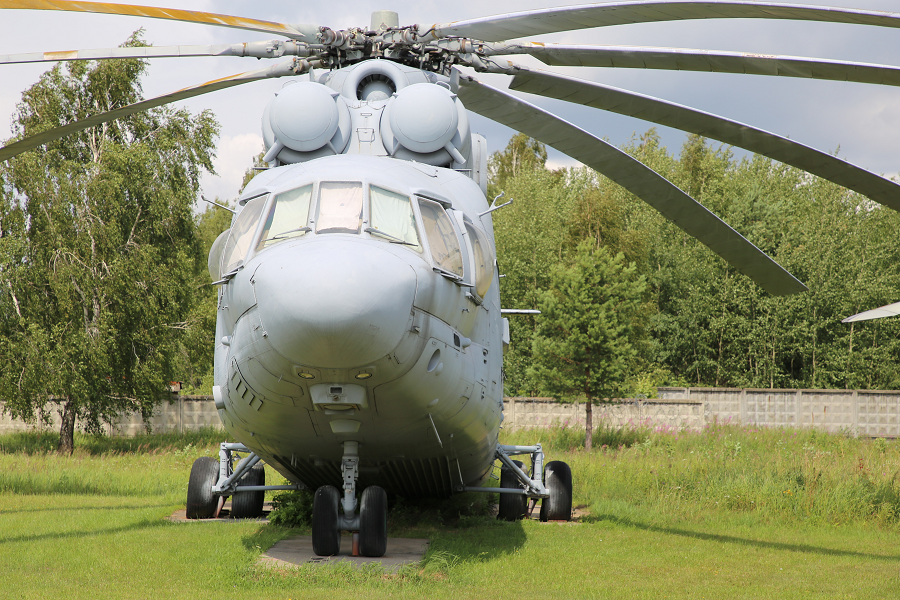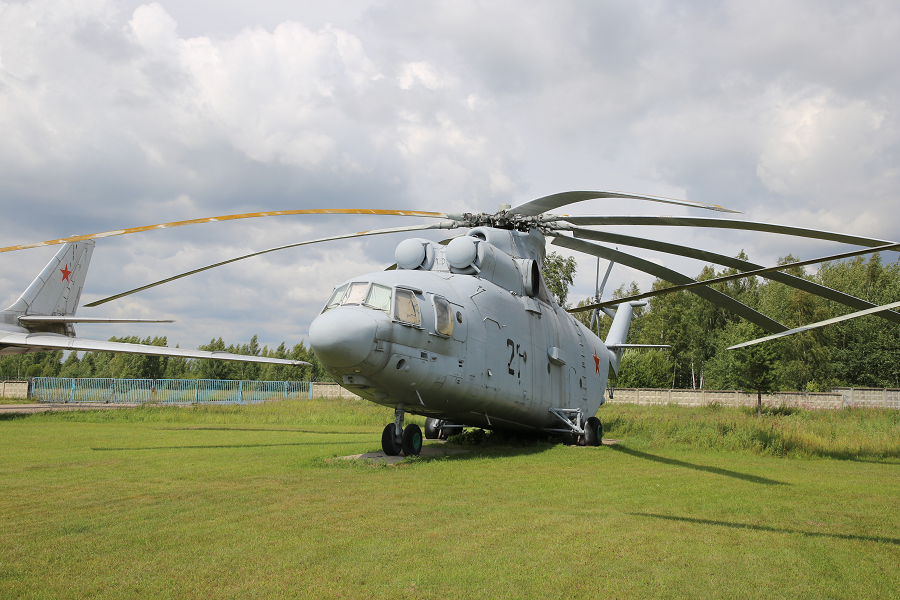Mi-26. A Soviet heavy transport helicopter from 1977: six world records. Flight range – 480 km, max. speed – 295 km/h, payload (total) – 20000 kg, on a sling – 20000 kg
The Mil Mi-26 (NATO reporting name: Halo) is a Soviet/Russian heavy transport helicopter. Its product code is Izdeliye 90. Operated by both military and civilian operators, it is the largest helicopter to have gone into serial production.
Following the incomplete development of the heavier Mil Mi-12 (prototypes known as Mil V-12) in the early 1970s, work began on a new heavy-lift helicopter, designated as the Izdeliye 90 (“Project 90”) and later allocated designation Mi-26. The new design was required to have an empty weight less than half its maximum takeoff weight. The helicopter was designed by Marat Tishchenko, protégé of Mikhail Mil, founder of the OKB-329 design bureau.
The Mi-26 was designed to replace earlier Mi-6 and Mi-12 heavy lift helicopters and act as a heavy-lift helicopter for military and civil use, having twice the cabin space and payload of the Mi-6, then the world’s largest and fastest production helicopter. The primary purpose of the Mi-26 was to transport military equipment such as 13-tonne (29,000 lb) amphibious armored personnel carriers and mobile ballistic missiles to remote locations after delivery by military transport aircraft such as the Antonov An-22 or Ilyushin Il-76.












